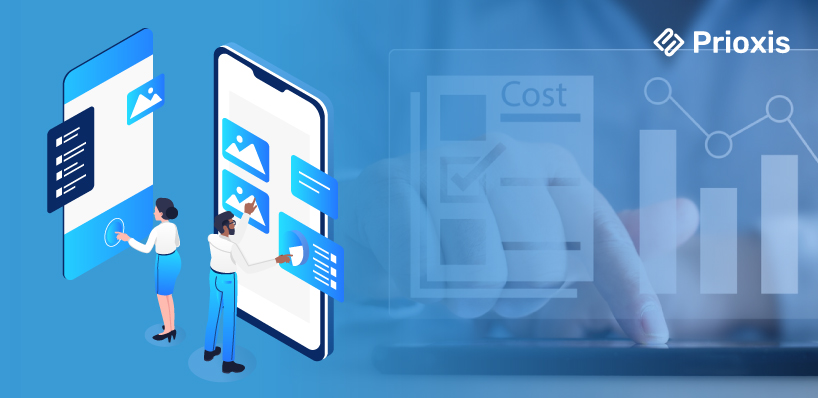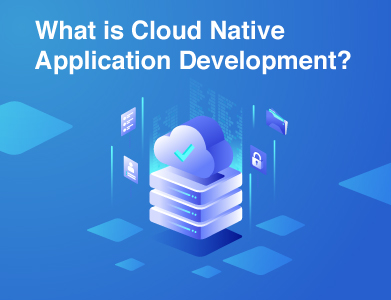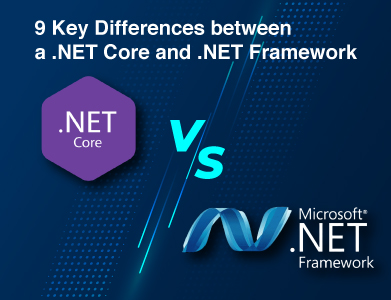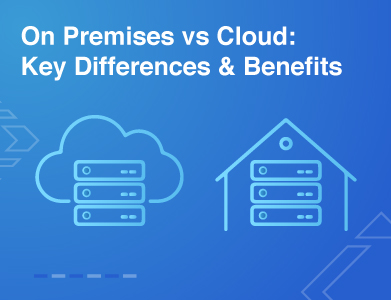Expertise
Fintech, or financial technology, is transforming the way people manage, invest, and transfer money, making banking conventional simpler and more accessible. From the development of online banking, fintech applications now offer bundled services including account maintenance, loan releases, and live transfers.
Companies and start-ups have a unique opportunity to innovate with the banking industry becoming more digital by the day. Nevertheless, it takes careful planning to develop financial software, and budget plays an important consideration. This article talks about the most critical determinants of fintech app development costs in 2025, so you can make the right decisions.
Fintech Market Overview
The fintech industry is expanding rapidly, transforming financial services by bringing digitalization and innovation. According to Statista, the rise of neobanks is a major shift towards non-traditional banking with consumers increasingly going digital for their financial services.
Mobile banking is leading this revolution, providing convenience to users and decreasing operational expenses for banks. Among the features that render banking apps indispensable in the current digital era are mobile check deposits, bill payments, and investment monitoring.
The worldwide fintech market is projected to expand to $305 billion by 2025 and $699.50 billion by 2030. Greater use of blockchain technology that enhanced financial security, and rising demand for digital payments are some of the primary drivers of the market.
With over $105.3 billion in investments in 2020, fintech is still one of the most vibrant and disruptive sectors, using AI, API integrations, and blockchain to transform financial services.
Types of Fintech Applications & Their Cost Estimate

Fintech applications have revolutionized the financial sector, offering users unique and effective digital transformation solutions. Ranging from banking to investment, fintech apps cater to all financial requirements, facilitating smooth transactions, improved financial planning, and increased security. The following is a comprehensive outline of the major fintech app types and their estimated development cost.
1. Banking Apps
Banking apps enable users to manage their accounts electronically, providing services like balance inquiry, money transfer, bill payments, P2P transactions, and ATM finders. Such apps bring convenience to the users and enable banks to cut costs by limiting the need for branch visits.
Key Features:
- User authentication and KYC verification
- Real-time tracking of transactions
- Fund transfers and mobile check deposits
- Bill payments and recurring transactions
- Financial insights based on artificial intelligence
Development Cost Estimate:
Developing a complete banking app development cost takes about 3500 hours of development, making the cost about $175,000 for a native mobile app and admin dashboard.
2. Lending Apps
Lending apps enable borrowing and lending of money by linking lenders and borrowers either directly or indirectly through financial institutions. The P2P lending applications apply machine learning and AI in determining creditworthiness, thus enabling users with poor credit history to obtain finance.
Key Features:
- Loan application and approval processes
- Credit risk assessment using AI
- Automatically generated loan contracts
- Payment tracking and reminder features
- Third-party credit agency integration
Development Cost Estimate:
It usually takes 2200 hours to develop a lending app, which would cost an estimated $110,000 for a fully developed native app with an admin panel.
3. Investment Apps
Investment apps allow users to buy and sell stocks, invest in cryptocurrencies, and better manage wealth. These apps provide insightful market information, automatic portfolio management, and AI-based investment suggestions.
Key Features:
- Secure user verification
- Real-time stock and market information
- AI-based investment recommendations
- Cryptocurrency and mutual fund trading facilities
- Automatic portfolio management
Development Cost Estimate:
It takes approximately 2100 hours for dedicated fintech app developers to create a feature-rich investment app at a cost of around $105,000 for the app and admin dashboard.
4. Insurance Apps
Insurance apps make buying, handling, and claiming insurance policies easy. The apps address different insurance areas, such as health, vehicle, travel, and commercial insurance.
Main Features:
- Policy shopping and buying
- Electronic claim entry and processing
- Risk evaluation with AI
- Document storage and retrieval
- Claim tracking in real-time
Development Cost Estimate:
A full-fledged insurance app takes approximately 1400 hours of development time with an estimated price of $70,000 upwards.
5. Consumer Finance Apps
Personal finance software assists individuals in beneficially handling their funds by following expenditures, making budgets, and evading economic pitfalls. Apps may connect to banking services and provide money lessons from the user's spending habits.
Main Features:
- Expense tagging and grouping
- Budgeting and setting objectives
- Reminder of expenses and due date
- Link to several bank accounts and payment websites
- Financial suggestion by AI
Development Cost Estimate:
Development of a personal finance app can take around 3450 hours, and it will cost an estimated $172,500 to develop a complete app with essential money management features.
Factors Influencing the Fintech App Development Cost
Creating a fintech app has various cost-influencing elements that dictate the bottom line.
- 1. App Complexity
The greater the number of features for your app, the more expensive it is. Simple apps with straightforward transactions are inexpensive, whereas complex functionalities such as AI-powered investment tools, blockchain technology integration, and real-time analytics are more costly.
- 2. Platform Compatibility
It is cheaper to build a fintech app for one platform (iOS or Android) while building for both will cost more. Cross-platform app development frameworks such as React Native or Flutter can cut costs by sharing a codebase.
- 3. Design Complexity
A fintech app needs an easy-to-use UI/UX for user interaction. Basic designs with common UI elements are cheaper, while bespoke designs with engaging animations and custom experiences take more development time and add to costs.
- 4. Security Measures
Fintech apps handle sensitive financial data, making security a top priority. Basic security features like data encryption and secure login are cost-effective, but multi-factor authentication, biometric verification, and AI- based fraud detection systems significantly raise development expenses.
- 5. Development Team Experience
The experience of your development team is the key driver of cost. Employing a team rich in fintech experience is a guarantee for compliance, security, and effectiveness but at a higher cost than less experienced developers.
- 6. Compliance with Regulations
Fintech applications have to adhere to financial regulations such as GDPR, PCI-DSS, and KYC/AML policies, which involve additional legal and security audits at a cost.
- 7. Maintenance and Updates
Ongoing updates, bug fixes, and security patches are continuous expenses that keep the app running, secure, and compliant with industry standards.
Outsourcing vs. In-House Fintech App Development
Outsourcing vs. in-house development is an important choice that affects the price, quality, and scalability of your fintech app. Each method has pros and cons, so it's important to analyze them according to your project needs.
In-House Development
Having an in-house team provides more control over the development process, enabling real-time collaboration, quicker iterations, and better alignment with business objectives. It provides consistent communication and more engagement with the product. It is, however, more expensive, with costs such as hiring, training, salaries, infrastructure, and software tools. Top fintech talent can also be difficult to retain.
Outsourcing Software Development
Outsourcing offers a talent pool from all over the world with requisite fintech specialization. It avoids the expense of hiring, training, and maintenance of infrastructure, which may be high. By this path, companies have access to cutting-edge technology, scalability, and fast time-to-market. Proper choice of the software development outsourcing partner is required—factors like experience, security compliance, communication, and transparency must be carefully considered so that risks concerning quality and security are avoided.
FinTech App Development Cost Based on Location
The location of a development team is a key factor in determining the cost of fintech app development. The cost of developing digital finance applications can differ greatly depending on the region, based on regional market rates for recruiting professionals.
A standard team for developing an app typically has 4-12 members, depending on project needs. Here is a brief cost comparison for hiring fintech app development agencies by location:
| Development Team Location | Cost of Hiring |
|---|---|
| Central Europe | $160,000+ |
| Western Europe | $240,000+ |
| Asia | $120,000+ |
| North America | $350,000+ |
| Oceania | $200,000+ |
This cost difference highlights the need for choosing the ideal location in terms of budget and project scope.
Conclusion
In conclusion, the fintech industry has grown quickly, proving that it is a disruptive force in the financial industry rather than just a passing trend. Utilizing cutting-edge technology like blockchain, artificial intelligence, and data analytics is essential to staying competitive and meeting consumer demands.
However, developing high-performing financial software can be costly; depending on elements like complexity, design, and premium features, the average cost exceeds $300,000. Businesses that want to start developing fintech apps need to be aware of these variables to choose the best course of action for their goals and available resources. They will be able to successfully and significantly enter the changing and quickly expanding sector by doing this.
FAQs
1: How much does it cost to create a FinTech app?
The price of developing a FinTech app is quite diverse depending on several factors such as the complexity of the app, features, and the location of the development team. Typically, you can anticipate the following price ranges:
- Low Complexity Apps: $60,000 - $90,000
- Moderate Complexity Apps: $90,000 - $150,000
- High High-complexity Apps (with sophisticated technologies and features): $300,000 and more
These are the total development costs, including design, development, testing, and deployment.










